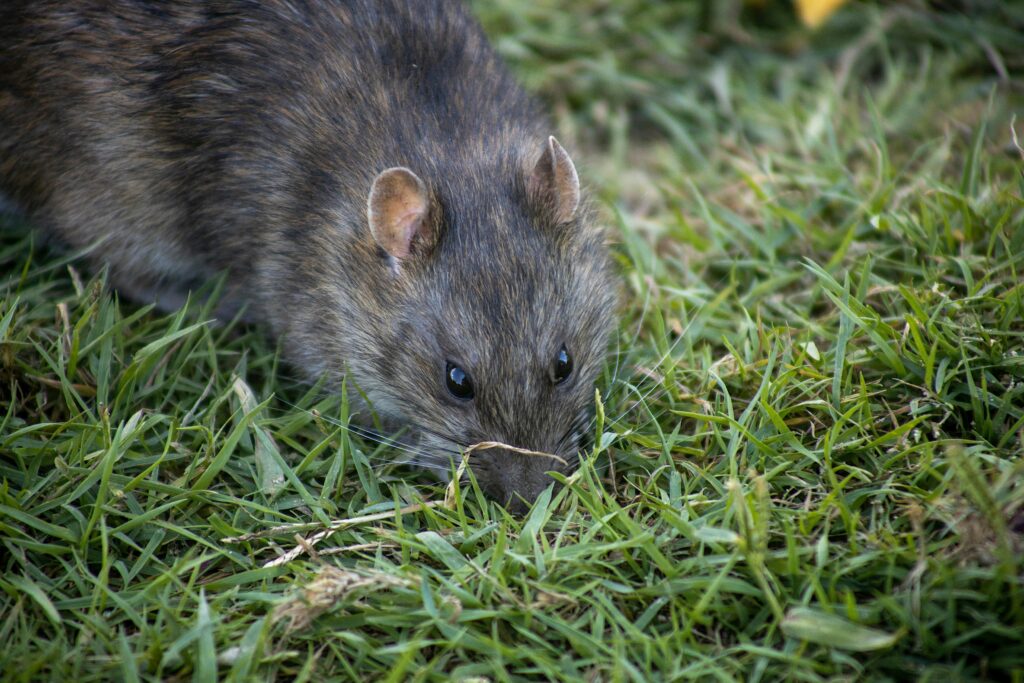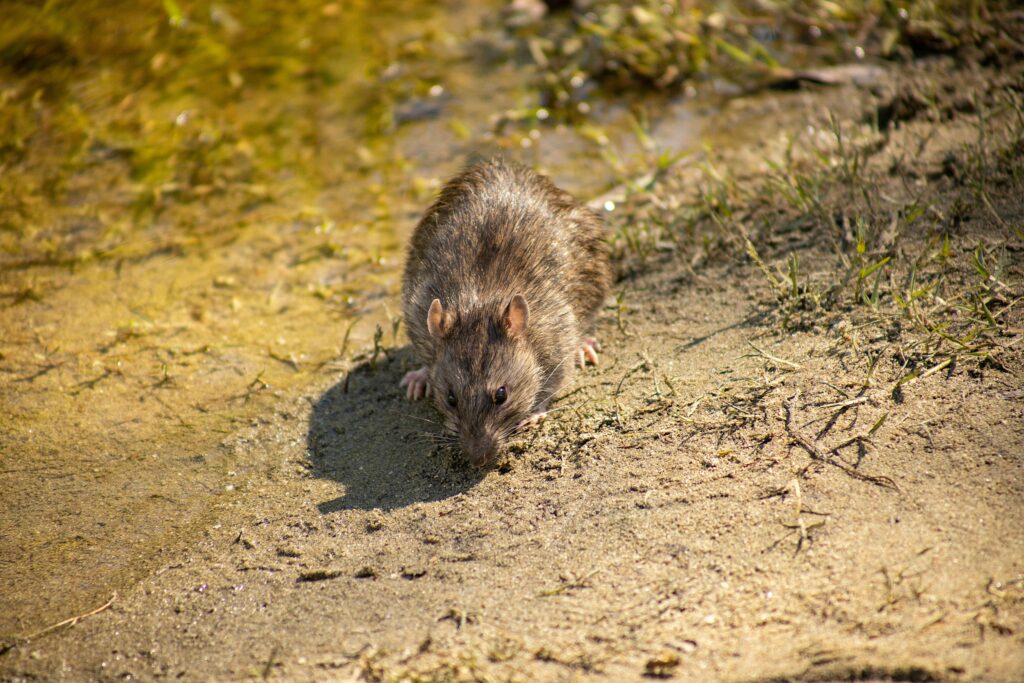Understanding the Threat: An Overview of Rat-Borne Diseases
Rat-borne diseases pose a significant health threat around the world, affecting both urban and rural populations. These illnesses are primarily spread by rats and other rodents, but their impact on human health can be devastating. This comprehensive guide delves into the various types of rat-borne diseases, their symptoms, and how you can protect yourself from these dangerous pathogens.
What Are Rat-Borne Diseases?
Rat-borne diseases are illnesses transmitted by rats and other rodents to humans. These can include bacterial, viral, and protozoan infections. Rats act as carriers, harboring pathogens in their blood, which can be spread to humans through direct contact with rodents, their feces, urine, or saliva, or indirectly via ticks, mites, or fleas that have fed on an infected rodent.
Common Rat-Borne Diseases
Some of the most well-known diseases associated with rats include:
- Hantavirus Pulmonary Syndrome (HPS): A severe respiratory disease transmitted by infected rodents through urine, droppings, or saliva. Humans can contract the disease when they breathe in aerosolized particles from contaminated sources.
- Leptospirosis: Often spread by coming into contact with water contaminated by rat urine, it can cause a wide range of symptoms, some severe, including kidney damage, meningitis, liver failure, and respiratory distress.
- Plague: While historically known as the “Black Death,” plague is still occasionally reported in the modern day and can be transmitted by fleas that have fed on infected rodents.
- Rat-Bite Fever: This disease can be transmitted through a bite or scratch from an infected rodent, or by handling a rodent with the disease without proper safety measures.
Transmission Mechanisms
The primary modes of transmission of rat-borne diseases include:
- Direct contact: Handling rodents, cleaning contaminated areas, or being bitten or scratched by an infected animal.
- Indirect contact: Involves contact with surfaces or inanimate objects that have been contaminated with urine, feces, or saliva of infected rodents.
- Vector-borne: Spread by insects such as fleas, ticks, or mites that have bitten an infected rodent.
Symptoms to Watch For
The symptoms of rat-borne diseases can vary widely depending on the pathogen but generally include:
- Fever and chills
- Muscle and body aches
- Severe headache
- Fatigue
- Gastrointestinal symptoms such as nausea, vomiting, and diarrhea
- More severe cases can lead to respiratory distress, meningitis, or other life-threatening complications.
Prevention and Control
Preventing rat-borne diseases involves several steps that can significantly reduce the risk of infection:
Environmental Management
- Rodent control: Regularly inspect home and surrounding areas for signs of rodents and take steps to eliminate sources of shelter, food, and water for these pests.
- Sanitation: Keep your environment clean and free of garbage and clutter where rodents can breed and reside.
- Exclusion: Seal holes and gaps in your home or workspace to prevent rodents from entering.
Personal Protective Measures
- Use protective gear: Gloves and masks can provide a barrier when cleaning areas contaminated by rodents or during potential exposure situations.
- Avoid contact: Do not handle rodents or their waste without protection, and avoid contact with potentially contaminated water sources.
Community Health Strategies
- Public education: Educating the community about the risks associated with rodent infestations and how to effectively manage them can reduce the incidence of rat-borne diseases.
- Surveillance and reporting: Monitoring rodent populations and reporting cases of rat-borne diseases to health authorities can help manage and mitigate outbreaks.
Conclusion
Rat-borne diseases are a serious health threat, but with proper preventive measures and strategies, their impact can be minimized. Understanding the risks associated with these pathogens, recognizing the symptoms of different diseases, and taking active steps to prevent exposure are essential for keeping communities safe. Always consult health professionals if you suspect you or someone else might be at risk of having contracted a rat-borne disease.

Protect Yourself and Your Family: Prevention Tips for Rat-Borne Illnesses
Rats and other rodents are known carriers of multiple pathogens that can cause serious diseases in humans. From the bubonic plague to leptospirosis, the health risks associated with rat populations are significant. Fortunately, there are numerous steps you can take to protect yourself and your family from these dangerous illnesses. This article offers comprehensive advice on how to minimize the risk of contracting rat-borne diseases.
Understanding Rat-Borne Diseases
Before delving into prevention strategies, it is crucial to understand what rat-borne illnesses are and how they spread. These diseases can be transmitted directly by contact with rodents, or indirectly through fleas, ticks, or mites that have fed on an infected rodent. Some of the most common rat-borne diseases include:
- Hantavirus Pulmonary Syndrome (HPS)
- Leptospirosis
- Rat-Bite Fever
- Salmonellosis
- The Plague
1. Maintain a Clean Living Environment
One of the most effective ways to prevent rat-borne illnesses is to deter rodents from entering your living space. Rats are attracted to food and waste, so keeping your home clean is essential.
- Secure Food Sources: Store food in sealed containers and avoid leaving pet food out overnight.
- Manage Waste: Dispose of garbage regularly and use bins with tight-fitting lids.
- Regular Cleaning: Ensure that your home, particularly kitchen and dining areas, are free of food scraps and residues.
2. Fortify Your Home Against Rodents
Preventing rodents from entering your home is crucial in minimizing the risk of rat-borne diseases.
- Seal Entry Points: Check for and seal any holes or gaps in your home’s walls, floors, and foundations that could allow rodents access. Steel wool and caulking can be effective.
- Use Rodent Guards: Install guards on doors, windows, and ventilation openings that might otherwise allow rodents easy entry.
3. Personal Protection Measures
When dealing with rodents, personal safety is paramount. This means protecting yourself during potential exposure.
- Use Protective Gear: Wear gloves and masks when cleaning areas contaminated by rodent excrement or nesting materials.
- Avoid Direct Contact: Never handle rodents—alive or dead—without thick gloves. Direct contact can lead to bites or exposure to disease.
4. Implement Natural Deterrents
Natural deterrents can be an environmentally friendly way to keep rodents at bay.
- Peppermint Oil: Rats dislike the smell of peppermint oil. Soak cotton balls in peppermint oil and place them in areas where rodent activity is suspected.
- Predators: Cats and dogs can deter rodents just by their presence. Even decoys like owl feathers can sometimes be enough to keep rats away.
5. Professional Pest Control
Sometimes, despite best efforts, professional help may be necessary to control a rodent problem.
- Scheduled Inspections: Have a professional pest control service inspect your home regularly to ensure that it remains rodent-free.
- Safe Extermination: If you have a severe infestation, professional extermination might be the safest way to eliminate it. Professionals can also ensure that pest control methods are safe and humane.
Conclusion
While rat-borne diseases can be frightening, the right preventive measures can greatly reduce your risk of infection. By maintaining a clean home, fortifying entry points, using personal protective equipment, employing natural deterrents, and seeking professional help when necessary, you can protect your family from the dangers posed by rodents. Remember, prevention is the best defense against disease.
Recognizing the Signs: Symptoms of Common Rat-Borne Diseases
Introduction:
Rats, while often dismissed as pests, pose a significant health risk to humans. They can carry various diseases, which can be transmitted through direct contact with rats or indirectly through their droppings, urine, or fleas. Recognizing the symptoms of these rat-borne diseases is crucial for early diagnosis and effective treatment. In this article, we’ll explore some of the most common rat-borne diseases and their associated symptoms.
- Leptospirosis:
Leptospirosis is a bacterial infection caused by Leptospira bacteria, commonly found in rat urine. Symptoms of leptospirosis can vary from mild to severe and may include:
- High fever
- Headache
- Muscle aches
- Jaundice (yellowing of the skin and eyes)
- Kidney failure
- Liver failure
- Meningitis (inflammation of the membranes surrounding the brain and spinal cord)
- Hantavirus Pulmonary Syndrome (HPS):
Hantavirus pulmonary syndrome is a severe respiratory disease caused by exposure to the saliva, urine, or droppings of infected rodents, including rats. Symptoms of HPS typically appear one to five weeks after exposure and may include:
- Fever
- Muscle aches
- Fatigue
- Shortness of breath
- Coughing
- Fluid buildup in the lungs
- Low blood pressure
- Rat-Bite Fever (RBF):
Rat-bite fever is a bacterial illness transmitted through bites or scratches from infected rats or through contact with their urine or droppings. Symptoms of rat-bite fever can include:
- Fever
- Chills
- Headache
- Muscle and joint pain
- Rash
- Vomiting
- Swelling at the site of the bite or scratch
- Salmonellosis:
Salmonellosis is a bacterial infection caused by Salmonella bacteria, commonly found in rat feces. Symptoms of salmonellosis typically develop within 12 to 72 hours after exposure and may include:
- Diarrhea
- Abdominal cramps
- Fever
- Nausea
- Vomiting
- Headache
- Muscle pain
- Plague:
While rare, plague is a serious bacterial infection caused by the Yersinia pestis bacterium, which can be transmitted to humans through the bite of an infected flea that has fed on an infected rat. Symptoms of plague may include:
- Sudden onset of fever
- Chills
- Headache
- Weakness
- Swollen and tender lymph nodes (buboes)
- Nausea
- Vomiting
Conclusion:
Recognizing the symptoms of common rat-borne diseases is essential for prompt diagnosis and treatment. If you experience any of the symptoms mentioned above, especially if you’ve had recent exposure to rats or their habitats, it’s crucial to seek medical attention promptly. Additionally, practicing good hygiene, sealing potential entry points for rats into your home or workplace, and removing sources of food and water that may attract rats can help reduce the risk of exposure to rat-borne diseases. Stay informed, stay vigilant, and stay healthy.
When to Seek Help: Responding to Exposure of Rat-Borne Pathogens

Introduction:
Rats are ubiquitous creatures, often sharing our urban and rural landscapes. While they may seem harmless or even endearing to some, they can pose significant health risks through the transmission of various pathogens. Rat-borne diseases can range from mild to severe, with potential long-term health implications if not promptly addressed. Understanding when to seek help after exposure to rat-borne pathogens is crucial for mitigating health risks and ensuring appropriate medical intervention.
Identifying Rat-Borne Pathogens:
Rats can carry a plethora of pathogens, including bacteria, viruses, and parasites, capable of causing diseases in humans. Some of the most common rat-borne illnesses include leptospirosis, hantavirus, rat-bite fever, salmonellosis, and plague. These pathogens can be transmitted through direct contact with rats or their excreta, bites, scratches, or inhalation of contaminated dust or aerosols.
Recognizing Symptoms:
Symptoms of rat-borne diseases can vary depending on the specific pathogen and the individual’s immune response. However, common symptoms may include fever, headache, muscle aches, nausea, vomiting, abdominal pain, diarrhea, coughing, and respiratory distress. In severe cases, organ failure or even death can occur. It’s essential to monitor for any unusual symptoms, especially following potential exposure to rats or their habitats.
Immediate Actions Following Exposure:
If you suspect exposure to rat-borne pathogens, taking immediate action is paramount. Firstly, thoroughly wash any wounds with soap and water if you’ve been bitten or scratched by a rat. Secondly, if exposure occurred through inhalation or ingestion of contaminated materials, seek fresh air immediately and rinse your mouth or eyes with clean water if necessary. Avoid touching your face before washing your hands thoroughly.
When to Seek Medical Help:
Prompt medical attention is crucial following exposure to rat-borne pathogens, particularly if symptoms develop. It’s advisable to seek medical help if:
- Bite or Scratch Wounds: Any bite or scratch from a rat should be evaluated by a healthcare professional to assess the risk of infection and the need for tetanus vaccination or antibiotics.
- Flulike Symptoms: If you develop flu-like symptoms such as fever, chills, body aches, or respiratory symptoms after potential exposure to rats or their habitats, seek medical attention promptly.
- Persistent Symptoms: Symptoms that persist or worsen over time, especially if accompanied by signs of dehydration, should not be ignored. Timely medical intervention can prevent complications and facilitate a faster recovery.
- Known Exposure to Infected Areas: If you’ve been in environments known to be infested with rats or have had direct contact with rat excreta, urine, or droppings, it’s advisable to consult a healthcare provider, even in the absence of immediate symptoms.
Preventive Measures:
Prevention is always better than cure when it comes to rat-borne diseases. Implementing the following preventive measures can help minimize the risk of exposure:
- Maintain Hygiene: Keep living and working areas clean and free of food debris, garbage, and clutter that can attract rats.
- Seal Entry Points: Seal cracks, gaps, and openings in buildings to prevent rats from entering. Keep doors and windows screened, and ensure proper ventilation.
- Secure Food Sources: Store food in sealed containers, and clean up spills promptly. Avoid leaving pet food outdoors overnight.
- Dispose of Waste Properly: Dispose of garbage in tightly sealed bins, and avoid leaving bags of trash outside for extended periods.
- Pet Care: Ensure pets are vaccinated and regularly treated for fleas, ticks, and other parasites that can be carried by rats.
Conclusion:
Exposure to rat-borne pathogens can lead to serious health consequences if not addressed promptly and appropriately. Understanding when to seek help and taking preventive measures are essential steps in safeguarding against these risks. By recognizing symptoms, seeking medical attention when necessary, and implementing preventive strategies, individuals can protect themselves and their communities from the threat of rat-borne diseases. Remember, early intervention can make all the difference in ensuring a swift recovery and preventing complications. Stay vigilant, stay informed, and prioritize your health and well-being.




